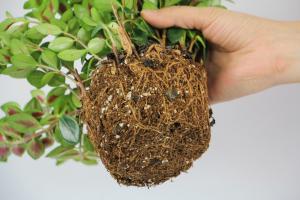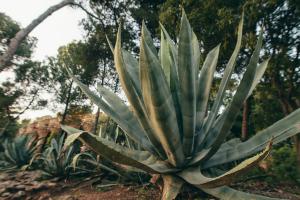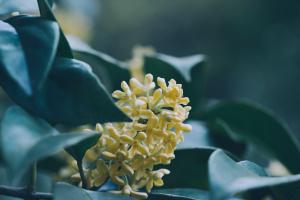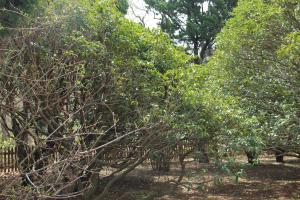Sowing and propagation method of Osmanthus fragrans
Sowing is generally better in autumn, and it is carried out in September by means of open field sowing
Before sowing, base fertilizer shall be applied to the seedbed, and the seedbed shall be watered thoroughly with water. After the water completely infiltrates into the soil, the seeds shall be evenly scattered on the seedbed, then covered with a thin layer of soil and covered with grass to reduce the evaporation of water in the soil
Keep the temperature at about 20 ℃, water the soil after it becomes dry, preferably on the grass to prevent the seeds from being washed away
The seedlings can appear in about a week. They will bloom in the next spring. The earlier they are planted in spring, the better, so as to prevent the seedlings from sending out new roots after the temperature rises. If they are transplanted again, it is easy to hurt the roots

Cutting propagation method of Osmanthus fragrans
Cutting is generally carried out in early summer or autumn, which is suitable for double petal varieties
The matrix shall be sandy loam with loose soil and breathable drainage, but do not use acidic soil, which will lead to poor growth of branches
Select the twigs with strong growth and no dead leaves and diseased leaves, which are generally about 5cm long and inserted into the sand bed at a depth of about 2-3cm
Keep the temperature at about 25 ℃ and pay attention to proper shading and moisturizing, so it is easier to take root

Precautions for propagation of Osmanthus fragrans
Because there are few fibrous roots of Osmanthus fragrans, it is necessary to bring some living soil when transplanting. The planting should not be too dense, which will affect the ventilation
Shade in summer and prevent waterlogging in rainy season. After the weather turns warm, Osmanthus fragrans grows in large blocks. Thin liquid fertilizer should be applied every 15-20 days, and attention should be paid to watering
In order to increase the amount of flowers, it is necessary to pick the heart and increase the germination of lateral branches. After flowering, in order to make Osmanthus fragrans bloom again, the residual branches should be cut off in time, and quick acting fertilizer should be applied, and attention should be paid to watering
When the fruit turns yellow, the seeds can be harvested in batches and stored for 5 or 6 years


 how many times do yo...
how many times do yo... how many planted tre...
how many planted tre... how many pine trees ...
how many pine trees ... how many pecan trees...
how many pecan trees... how many plants comp...
how many plants comp... how many plants can ...
how many plants can ... how many plants and ...
how many plants and ... how many pepper plan...
how many pepper plan...































